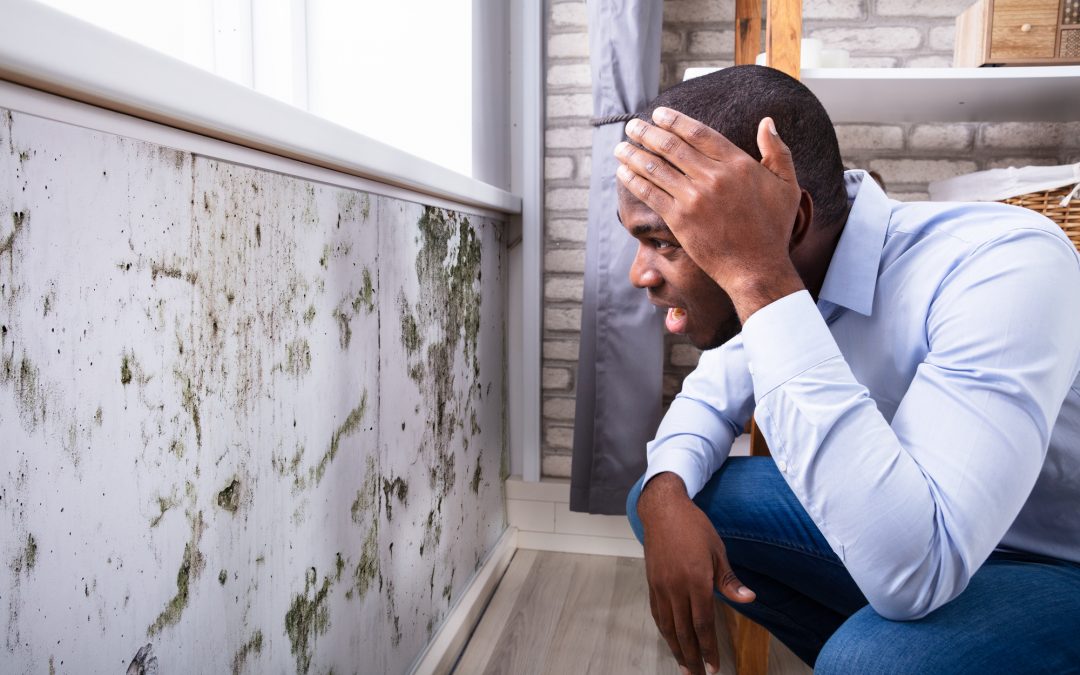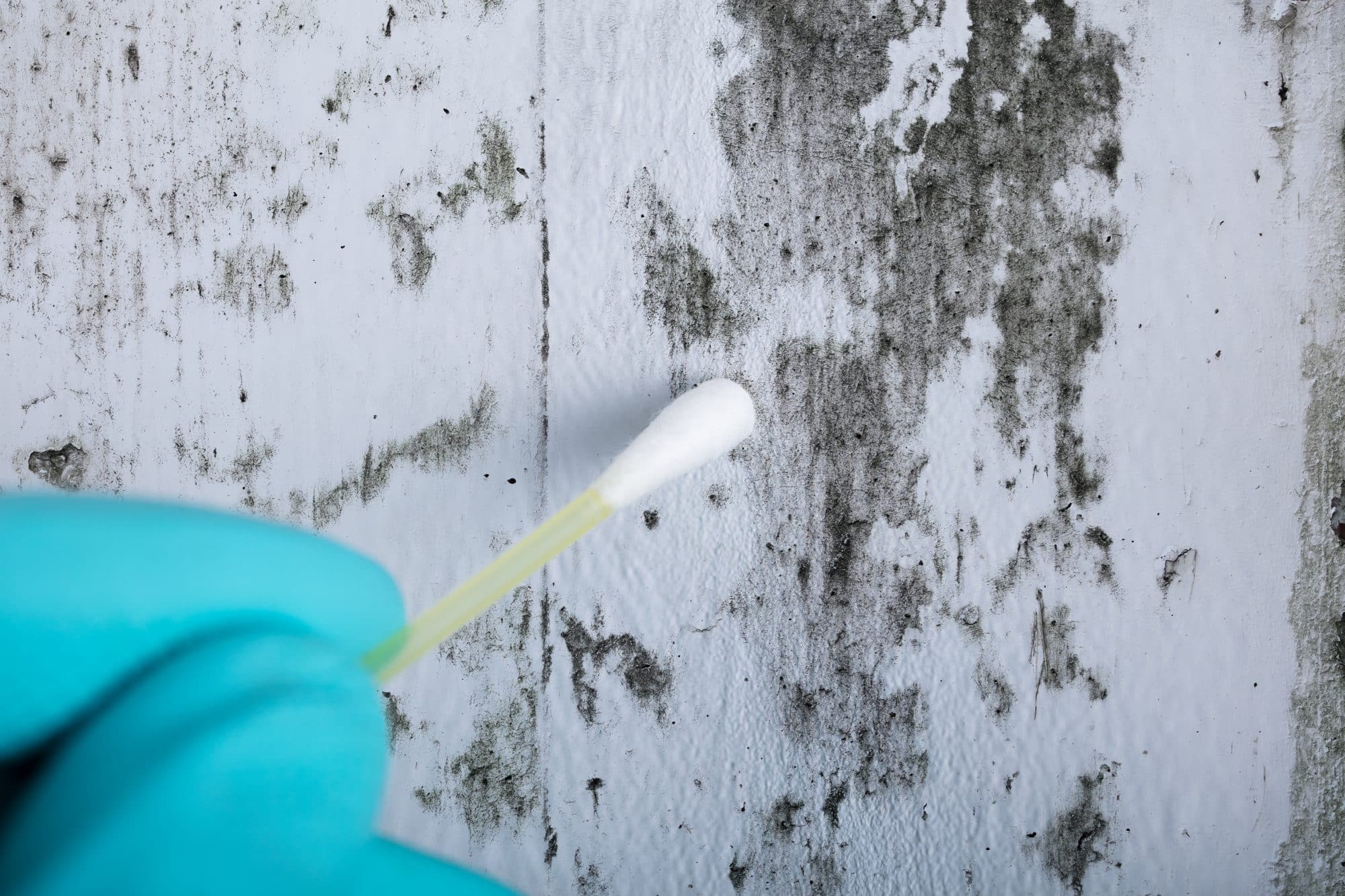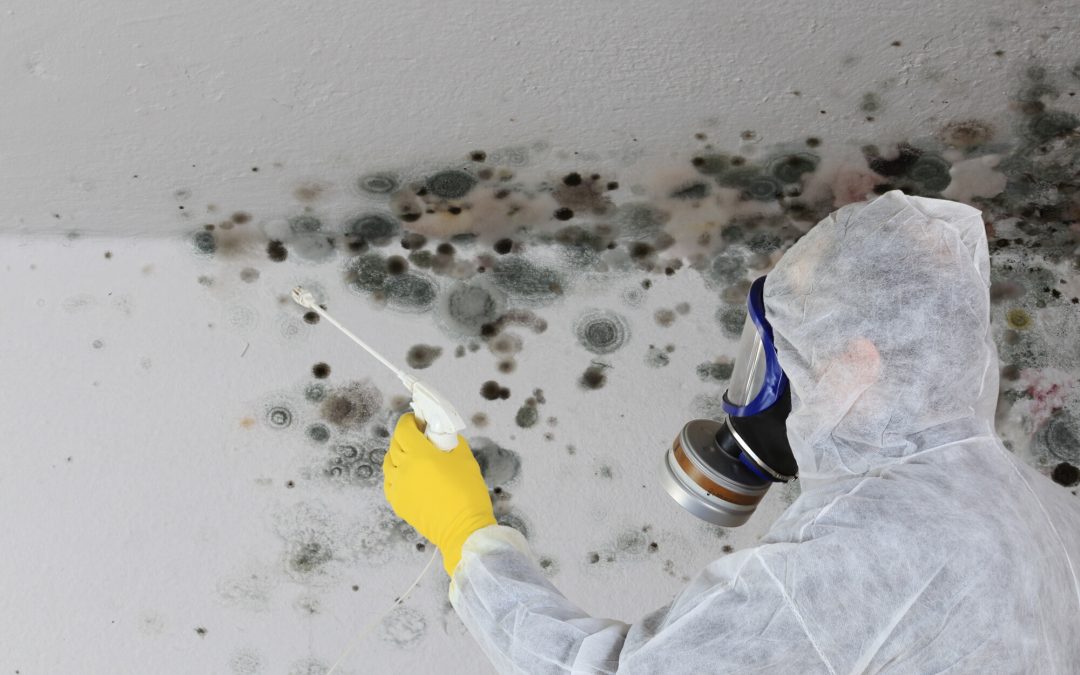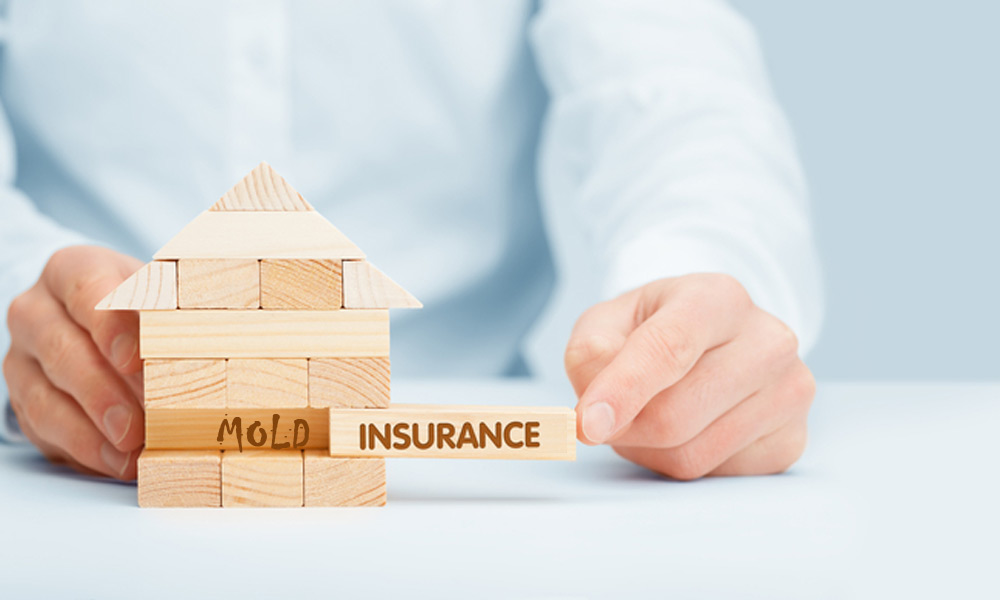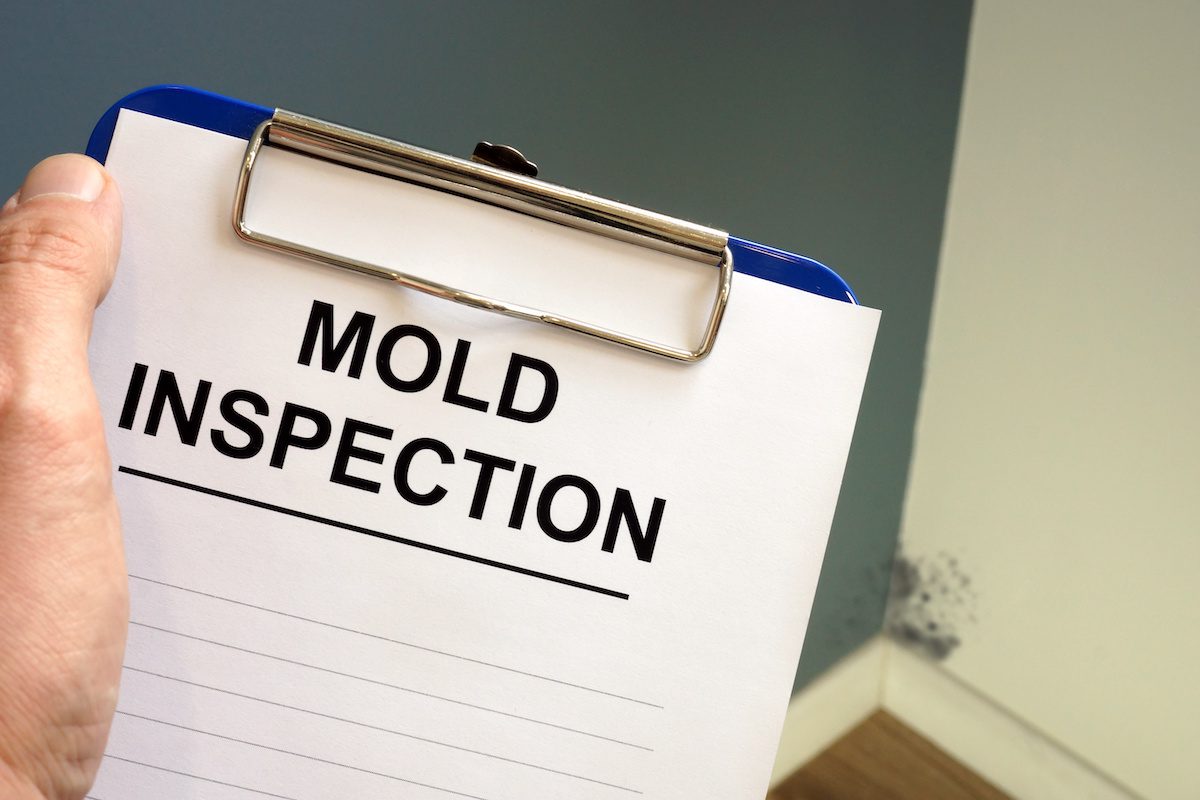Mold is an insidious problem that can cause big headaches for homeowners and renters. Regular mold inspection is a great way to ensure that your property is free from this hidden menace, but many people don’t realize just how beneficial they really can be. If you live in a humid or damp climate calling a certified mold inspector for regular mold inspection is highly recommended.
No matter what kind of building you live in – whether it’s a house or apartment – any structure with moisture present has the potential to develop mold growth. Mold spores travel through the air and attach themselves to wet surfaces where they will feed on organic materials such as wood, paper or insulation. Left unchecked, these colonies can cause damage to walls, furniture and other items around your home. That’s why it’s essential to get regular professional mold inspections done!
When inspecting for possible sources of infestation, experts use specialized tools like thermal imaging cameras and moisture meters to detect areas of high humidity which may indicate pockets of fungal growth. With their trained eyes and years of experience in identifying signs of active contamination, my team can quickly identify any potentially hazardous problems before they have time to spread throughout your home.
So if you’re looking for peace of mind when it comes to keeping your family safe from allergies and health issues related to indoor molds, then regular inspection services are definitely worth considering!
Definition
Mold inspections are an absolutely essential part of any homeowner or business owner’s regular maintenance routine. They are unbelievably important in order to keep your property clean, safe and healthy for all who occupy it! As a mold inspection expert, I am here to tell you about the many benefits that come from having regular mold inspections performed on your property.
To start off with, let’s define what exactly is meant by “mold inspection”. Mold inspections involve assessing potential areas within a given space where mold growth may be present. A professional inspector will use specialized tools such as infrared cameras and moisture meters to detect signs of existing or past microbial growth.
In addition, visual observations can also be made of walls, ceilings and other structural components in search of visible mold colonies or staining which often indicates past growth activity. All these measures combined help make sure that no area goes unchecked when it comes to the presence of mold in a property.
Finally, after a thorough assessment has been completed, detailed reports outlining the findings and recommendations will generally be provided so that appropriate steps can then be taken to address any issues found during the inspection process.
This helps ensure that those living or working in the inspected environment remain safe from potential health hazards associated with exposure to mold spores and mycotoxins. With this knowledge at hand, one can confidently move onto learning more about how best to prevent future outbreaks from occurring through careful monitoring and maintenance routines going forward.
Overview Of Mold Growth
Mold growth can happen anywhere moisture is present. It’s important to inspect any area of your home or business that could be susceptible to mold, such as bathrooms, basements, crawl spaces and attics. Mold spores are microscopic and hard to spot with the naked eye; they need an experienced inspector to detect them in all their hiding places. Even if you don’t see visible signs of mold, having a professional come out for regular inspections will help you stay on top of potential issues before they become bigger problems.
High humidity levels also contribute to mold growth, so monitoring indoor air quality can be beneficial in preventing it from occurring. The most common types found indoors include Stachybotrys (black), Cladosporium (greenish-black) Aspergillus (brown/gray) Penicillium (blue/green). They feed off organic materials like wood and paper products and can cause serious damage when left untreated. If you suspect there may be a problem in your building, it’s best to take action quickly by getting an inspection done right away.
When caught early enough, many cases of mold can easily be resolved without extensive repairs or costly remediation services needed. A thorough assessment of your property combined with routine maintenance should keep it at bay over time. Moving forward into the next section we’ll explore the health risks associated with mold exposure.
Health Risks Associated With Mold Exposure
Mold can be incredibly dangerous if left unchecked. The spores are easily breathed in and can cause a variety of health issues like asthma, coughing, sneezing, eye irritation, and more serious conditions. In extreme cases, black mold exposure has been linked to neurological disorders and cancer. It’s important for individuals to understand the risks associated with inhaling airborne fungal spores because it could result in long-term health problems.
In addition to these physical effects, there is also an emotional toll taken on those exposed to mold growth in their homes or workplaces. Those who suffer from allergies may experience feelings of anxiety when they know there’s a risk of being exposed to mold. Even people who don’t have any known allergies may feel uneasy and concerned about potential mold contamination due to its potentially hazardous nature.
These risks illustrate why it’s so important that buildings get regular, professional inspections by qualified personnel experienced in dealing with mold remediation projects. Scheduling a regular inspection ensures that any areas of concern are identified promptly and addressed appropriately before anyone gets sick or injured as a result of prolonged exposure.
This makes having routine assessments all the more critical – both for property owners’ peace of mind and for protecting occupants’ wellbeing. With this knowledge in hand, you’ll better understand why it’s vital to arrange for regular inspections and take action quickly should an issue arise.
Reasons To Schedule A Regular Inspection
Regular mold inspection is an important part of keeping a home or business safe from potential issues. It’s not just about finding and removing existing mold, but also preventing it from returning in the future. Here are some reasons why scheduling regular inspections can be beneficial:
First and foremost, having a professional inspect for mold allows you to identify any potential problems before they become serious. By catching any signs of mold early on, you can prevent the growth of larger colonies that could cause more extensive damage down the road. Plus, if left unchecked, certain types of molds can produce spores which could spread throughout your building and impact indoor air quality.
Another reason to have regular examinations done is because molds tend to grow quickly in damp environments. Inspectors will be able to assess your property and determine whether there is excessive moisture present that could lead to mold growth. If so, they can recommend solutions such as dehumidifiers or improved ventilation systems that should help keep humidity levels low enough to deter further development of fungi.
Being aware of underlying conditions like poor ventilation or water leaks can save you time and money by allowing preventive measures to be taken rather than costly repairs later on. With this knowledge at hand, homeowners and businesses alike can feel confident knowing their premises are free from hazardous substances like mold.
Knowing exactly what needs attention makes it easier to make sound decisions when addressing these kinds of issues. Ultimately, investing in regular inspections provides peace-of-mind while safeguarding against potentially expensive damages caused by undetected infestations. This makes it all the more necessary to find out who should inspect for mold?
Who Should Inspect For Mold?
Professional mold inspectors are the ideal people to trust when it comes to identifying and assessing any potential mold problems. They have the training, experience, and expertise to detect even hidden sources of moisture which can lead to a wide range of issues in your home or business. Moreover, they provide an objective evaluation that is not biased by emotion or opinion.
A professional inspector will conduct a thorough visual inspection inside and outside the building for signs of fungal growth. The inspector may also take air samples from various locations within the premises as well as perform other tests such as dust sampling, wall cavity sampling, surface swabbing, carpet testing, etc., depending on what is needed. All these steps help paint a complete picture of any existing problem so that you can address it properly with remediation services if necessary.
Having someone who knows exactly how to look for trouble spots can save you time and money in the long run. It’s important to hire an experienced mold inspector who has been certified by a respected organization like the National Organization of Remediators and Mold Inspectors (NORMI).
This ensures that they are up-to-date on all relevant safety protocols and industry standards. With their assistance, you can be sure that your home or workplace remains safe and free from dangerous levels of mold contamination. From here we move onto discussing how best to prepare for a mold inspection.
How To Prepare For A Mold Inspection
Once you’ve identified the need for a mold inspection and hired an experienced professional, it’s important to understand how to prepare your home or business. Doing so can help streamline the process and ensure that nothing is missed during the assessment. Here are some tips on getting ready:
- Clear Access: Make sure any areas where inspections will be conducted are easily accessible by removing furniture, boxes, curtains, etc. The inspector needs a clear view of walls and ceilings as well as access to HVAC systems and other hidden spaces.
- Remove Debris: All surfaces should be free from dust and debris before the inspector arrives in order to get an accurate reading of potential issues. Vacuum carpets and rugs thoroughly, sweep floors, wipe down countertops, shelves and any other visible surfaces within reach of the inspector’s tools or equipment.
- Safety Precautions: If any suspicious materials such as asbestos-containing products have been present in your building at any point in its history, take extra precautions to make sure they won’t interfere with the inspection process or put anyone at risk while in your space.
By taking these steps ahead of time, you’ll give your mold inspector every opportunity to do their job effectively – without having to worry about obstacles along the way! Now that everything is properly prepped, it’s time to find out what takes place during a typical examination.
What To Expect During An Inspection
When it comes to a mold inspection, most people don’t know what to expect. A professional inspector is the best option when it comes to identifying sources of moisture that could lead to mold growth in your home or business. During an inspection, they will identify areas that may be prone to water intrusion and measure levels of humidity in each room.
They will also inspect any visible materials such as drywall and insulation for existing signs of mold growth. In some cases, they may even use specialized equipment like thermal imaging cameras to detect hidden moisture behind walls or ceilings. After the inspection has concluded, you should receive a report detailing their findings and offering recommendations on how best to address any potential problems found during the investigation. The next step would then be hiring professionals who can properly remediate any identified issues.
How A Professional Can Help Identify The Source
Having the expertise of a professional mold inspector is essential when it comes to identifying the source of your problem. A trained eye can detect even the smallest amounts of moisture which can cause mold growth in all kinds of places, such as:
|Source | Mold Growth Areas|
|————-|——————|
|Leaks or Flooding | Attic, Basement and Crawlspaces |
|Humidity/Condensation Issues | Cabinets, Window Sills and Bathrooms |
|Plumbing Problems | Under Kitchen Sinks and Behind Walls |
A professional will also be able to identify any water intrusion points that may have been missed during an initial inspection. For example, by using infrared imaging technology, they are able to locate areas with elevated humidity levels behind walls where mold could be hidden from view.
They can then use specialized sampling techniques to confirm whether or not there is a potential for mold growth in these locations. It is important to note that having a professional inspect your home does not guarantee you won’t find mold elsewhere; however, it does give you peace of mind knowing that if something were to develop down the road, you would know what steps need to take place for proper remediation. As experts in their field, professionals can provide valuable advice on treatment options for remediation should a problem arise.
Treatment Options For Remediation
Once a mold inspection has revealed the presence of mold in your home, several treatment options are available to remediate and prevent future growth. The best option for any situation depends on the type of mold present, as well as its severity or extent of spread.
First and foremost, it’s important to identify and remove the source of moisture which enabled the initial mold growth. This is essential for preventing recurrence. Depending on the size and location of an infestation, professional clean-up may be necessary. In these cases, personal protective equipment should always be worn by those involved in cleaning up hazardous material such as toxic molds like stachybotrys chartarum (black mold).
In addition to removing physical contamination from walls, ceilings, carpets etc., surfaces can also be treated with antimicrobial agents that combat active spores. Air quality measures can then help clear out airborne mold particles – this could involve using air purifiers or hiring a ventilation expert to replace existing ductwork if needed.
These treatments will deal effectively with most minor issues caused by indoor mold contamination; however more complex circumstances might require additional steps such as structural repairs or rebuilding contaminated sections/areas of property. With proper care and maintenance though, homeowners can avoid further complications after their initial remediation efforts have been completed. Moving forward into aftercare and prevention measures will ensure sustained results over time.
Aftercare And Preventative Measures
Having discussed the various treatments available for mold remediation, it is time to move on to aftercare and preventative measures. While treating an existing mold problem can be challenging, preventing a new outbreak is much simpler. By following these steps, homeowners can ensure their property remains free of unwanted fungi:
– Regularly inspect your home for areas where moisture may accumulate; such as around pipes, windowsills, rooflines etc.
– Make sure bathrooms are well ventilated by using exhaust fans or opening a window when taking showers/baths.
– Clean surfaces regularly with antibacterial solutions or wipes to remove any spores before they have a chance to grow.
– Repair any leaks in plumbing fixtures immediately and check ceilings and walls periodically for water stains or discoloration that could indicate hidden damage from leaking pipes or roofs.
– Consider having your home professionally inspected at least once every two years by an experienced mold inspector who will provide detailed reports on potential issues within the home’s structure that may lead to future outbreaks.
By proactively addressing these points above, many problems associated with mold growth can be avoided altogether. Homeowners should remain vigilant about inspecting their homes for signs of moisture accumulation and acting quickly if one does occur.
It is important not just for the health of you and your family but also for preserving the value of your property over time. With regular inspections and diligent maintenance, there’s no reason why your home shouldn’t stay safe from harmful molds!
Frequently Asked Questions
What Is The Average Cost Of A Mold Inspection?
When it comes to the cost of a mold inspection, there is no one-size-fits-all answer. A lot depends on factors such as size and complexity of the property being inspected, accessibility of certain areas, number of samples taken for testing, etc. In general though, you can expect to pay anywhere from $250-$500 for an initial professional assessment.
Many reputable attic cleaning companies will come to your home to perform a free attic Inspection, Attic Health in San Diego is one of many examples. Depending on scope and severity of any infestations found during this assessment, additional charges may be required for further investigation or remediation efforts.
It’s important to keep in mind that while an upfront investment in a professional mold inspection may seem like a significant expense at first glance – if done properly – it will save money down the line by helping detect potential issues early before they become more costly problems later on. Thorough inspections often uncover hidden sources of moisture which could lead to elevated indoor levels of mold spores; seeing these issues addressed right away helps ensure your home stays healthy and safe over time.
Regularly scheduled assessments are also key when it comes to keeping costs low since they help identify problem areas earlier than would otherwise be possible with periodic spot checks alone. Investing in regular maintenance provides peace of mind knowing that any existing problems have been identified and dealt with quickly – allowing homeowners to avoid having to deal with bigger headaches down the road due to unchecked growth or spread of mold colonies.
Is Mold Removal Covered By Insurance?
It’s a common question: is mold removal covered by insurance? Well, the short answer is that it depends. Different insurance companies have different policies on this type of coverage, so it’s best to check with your particular provider for details. Here are four key points to consider when dealing with mold and insurance:
- **Insurance may cover damage caused by hidden water leaks** – if you can prove that the leak existed before any visible signs of mold occurred, then you could be eligible for compensation from your insurer.
- **Mold remediation isn’t always necessary** – in some cases, simple cleaning processes such as wiping down surfaces or using HEPA vacuums can remove surface-level mold growth without having to do more costly repairs.
- **You might not need an inspection report** – depending on the extent of the infestation, sometimes simply getting rid of the source (such as fixing plumbing problems) will suffice; however, if there is extensive damage, an expert opinion might be needed in order to make sure everything has been properly identified and treated.
- **Check your policy limits first** – many insurers impose restrictions on claims related to mold clean up; these usually include a dollar limit per incident or even an exclusion from coverage altogether.
As a certified mold inspector I understand how complex this issue can be—especially since no two policies are exactly alike—but taking time to research your options could save you money and headaches in the long run should you ever find yourself facing a potential problem with indoor air quality due to fungal contamination. Knowing what kind of protection you have ahead of time gives you peace of mind knowing that if something does happen, you’ve got someone who’s got your back!
Are All Molds Dangerous To Humans?
Molds can be found in both indoor and outdoor environments, so it is important to understand which molds are dangerous to humans. In many cases, the answer is yes; however, not all molds pose a health risk. It’s essential for property owners to determine if they have any potentially hazardous mold growth on their premises.
When inspecting properties with suspected mold issues, I always look at the type of mold present as well as its location and extent. Some species of mold produce toxins that can cause adverse health effects when inhaled or ingested by people living in an affected area. These potential risks should be taken seriously and require immediate attention from qualified professionals. Additionally, some types of mold may trigger allergic reactions in sensitive individuals who come into contact with them.
The good news is that there are ways to mitigate these risks through regular inspections and proactive removal efforts. By keeping up-to-date with professional remediation strategies, you can help ensure a safe environment for yourself and those around you.
How Do I Know If I Have A Mold Problem?
Mold can be a serious issue for any home, and it’s important to know how to identify the signs that you may have a problem. If left untreated, mold can cause health problems and structural damage in your home. So how do you know if there is an issue?
First of all, look out for visible signs of mold growth such as black spots or patches on walls, floors, ceilings or furniture. These often indicate excess moisture which could lead to further issues with mold. Other indicators include musty odors in certain areas of the house, water stains or leaks around windows or plumbing fixtures. Also keep an eye out for peeling paint, condensation or other discoloration on walls and surfaces – this could also point towards potential mold growth behind them.
It might also be beneficial to seek professional assistance from a certified mold inspector who can conduct an assessment of your property. They will use specialized equipment to check for mold levels within the air and material samples from throughout the building. This helps provide an accurate picture of whether there is any active mold present and where it is located so appropriate measures can be taken to address the situation accordingly.
If you think there may be a risk of hidden mold within your home then don’t delay – take action now before the problem grows worse!
How Long Does It Take To Complete A Mold Inspection?
Mold inspections are a critical step in identifying potential issues and addressing them quickly. But how long does it take to complete a mold inspection? Depending on the complexity of your home or building, an experienced inspector can typically finish an inspection within one to three hours. Here’s what you should expect during that timeframe:
- **Inspection Preparation** – Before beginning any type of inspection, the inspector will look at blueprints and other documents related to the property. This helps ensure they have all necessary information needed before starting their physical examination of the structure.
- **Visual Inspection** – The next step is a visual inspection involving looking for signs of water damage and/or visible mold growth inside the living area or workspace as well as areas where moisture may be present such as around windows, doors and plumbing fixtures.
- **Air Sampling** – If there are indications of hidden mold growth or if air quality concerns exist, air sampling may be recommended by your inspector. Air samples from both outside and inside the building help determine levels of spores found in each environment so levels can be compared against established standards for safety evaluation purposes.
- **Testing Results Analysis** – Once test results are received back from the laboratory, the inspector will review them with you in detail to explain their findings and make recommendations based on those results about possible actions moving forward including remediation options when applicable.
Given the importance of detecting potential problems early on, taking time out for a full inspection conducted by a qualified professional is essential; allowing ample time for tests along with analysis and reporting provides peace-of-mind knowing your health, family’s wellness, and business operations won’t suffer due to unseen environmental hazards like indoor mold contamination.
Conclusion
Mold inspection is an important part of protecting your home and family. Ensuring regular mold inspections can help you save a lot of money in the long-term, as it could potentially detect hidden issues before they become major problems. It’s also worth noting that not all molds are dangerous to humans, making it essential to have a professional assess any mold growth you may find around your property.
Knowing when to call for an inspection isn’t always easy, but if you’re aware of common signs such as discolored walls or musty smells then these should be taken seriously. In addition, insurance cover can provide peace of mind should anything go wrong during the process, so it’s worth checking with your provider before arranging an appointment with a specialist.
Overall, having regular mold inspections will give you more control over what goes on in your home and make sure that both you and your family stay safe from potential health risks caused by mold spores. I would recommend speaking to a qualified inspector who has experience dealing with this kind of issue to ensure reliable results – after all, prevention is better than cure!


